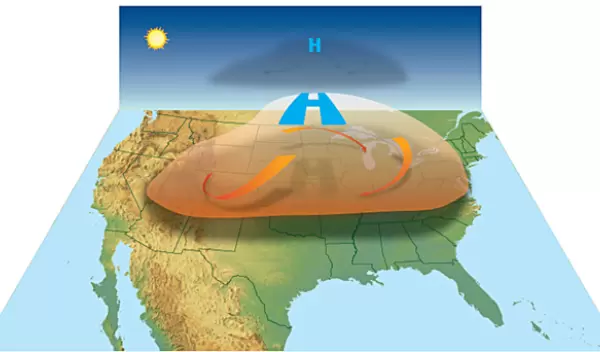
New modeling method helps scientists understand extreme heat waves
To prepare for extreme heat waves around the world — particularly in places known for cool summers — climate simulation models that include a new computing concept may save tens of thousands of lives.
The concept, called "ensemble boosting," uses computationally efficient modeling to simulate a large set of extreme but plausible heat waves while avoiding hundreds of hours of expensive calculations on large computers.
The study on the new modeling method, led by U.S. National Science Foundation-supported scientists at Cornell University and other institutions, was published in Nature Communications.
"As a society, we don't always need to learn from our mistakes," said co-author Flavio Lehner at Cornell. "We can learn from our forecasts and predictions."
From late June to mid-July 2021, western North America, including the Pacific Northwest in the U.S. and British Columbia in Canada, broiled in an unprecedented heat wave. Lytton, British Columbia, for example, set a national Canadian record daily high temperature at 121.3 degrees Fahrenheit on June 29, 2021. During the excessive heat wave, more than 800 people died in Canada and more than 600 died in the U.S.
At the time, such an extreme event seemed unfathomable, and questions arose whether climate models could even simulate such an event. But by using ensemble boosting in current climate models, even more excessive heat events in the face of worsening climate change are seen as plausible.
Ensemble boosting takes the most extreme heat events found in current computer climate models and reruns them with tiny differences in the initial conditions — the butterfly effect, where miniscule changes bring large effects — to see if even more extreme heat events are possible.
"Computationally, it's much more affordable than running traditional climate model simulations, for hundreds or even thousands of years, in a computer and then find only two or three extreme heat wave events," said co-author Angeline Pendergrass of Cornell.
The goal of ensemble boosting is to find the envelope of just how extreme an event may be simulated by a climate model, she said.
"One of the challenges we have in climate science are the long timescales that need to be observed or simulated to quantitatively describe what is possible or probable in a given climate state," Pendergrass said. "Ensemble boosting is a way to sample the edges of the space of what is possible for an extreme event."
"With meteorological models, in terms of the weather timescale, we can forecast heat waves quite well," Lehner said. "If seven days from now we see that there is a heat wave on the horizon – and it looks like it's going to be extreme – meteorologists are excellent at making those predictions."
However, Lehner said, this is not enough warning to organize cooling shelters for tens of thousands of people who don't usually have access to air conditioning. To prepare, long-term planning at municipal levels is needed. Ensemble boosting provides the worst-case scenario in a model format for the forthcoming decades that can be used for such planning.
